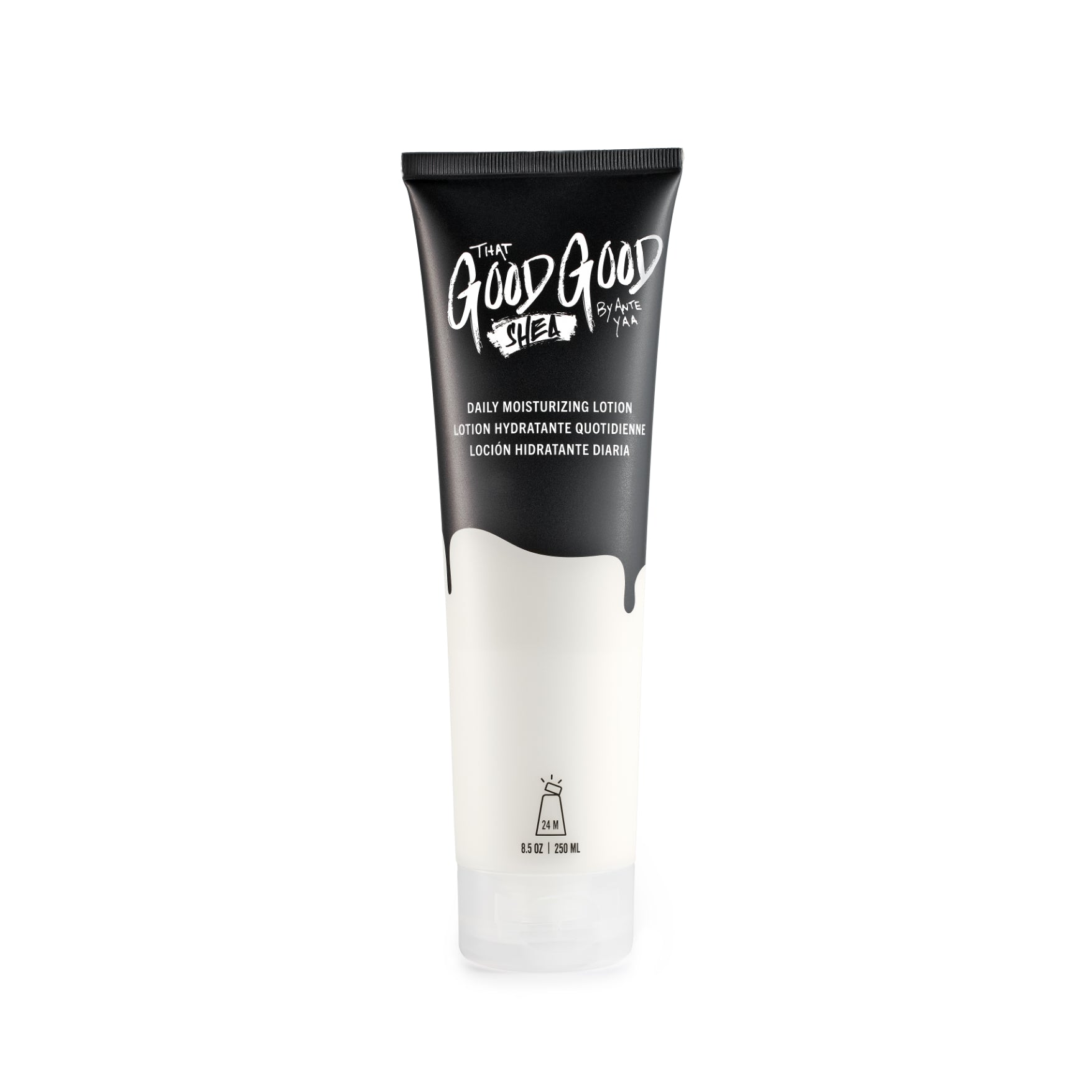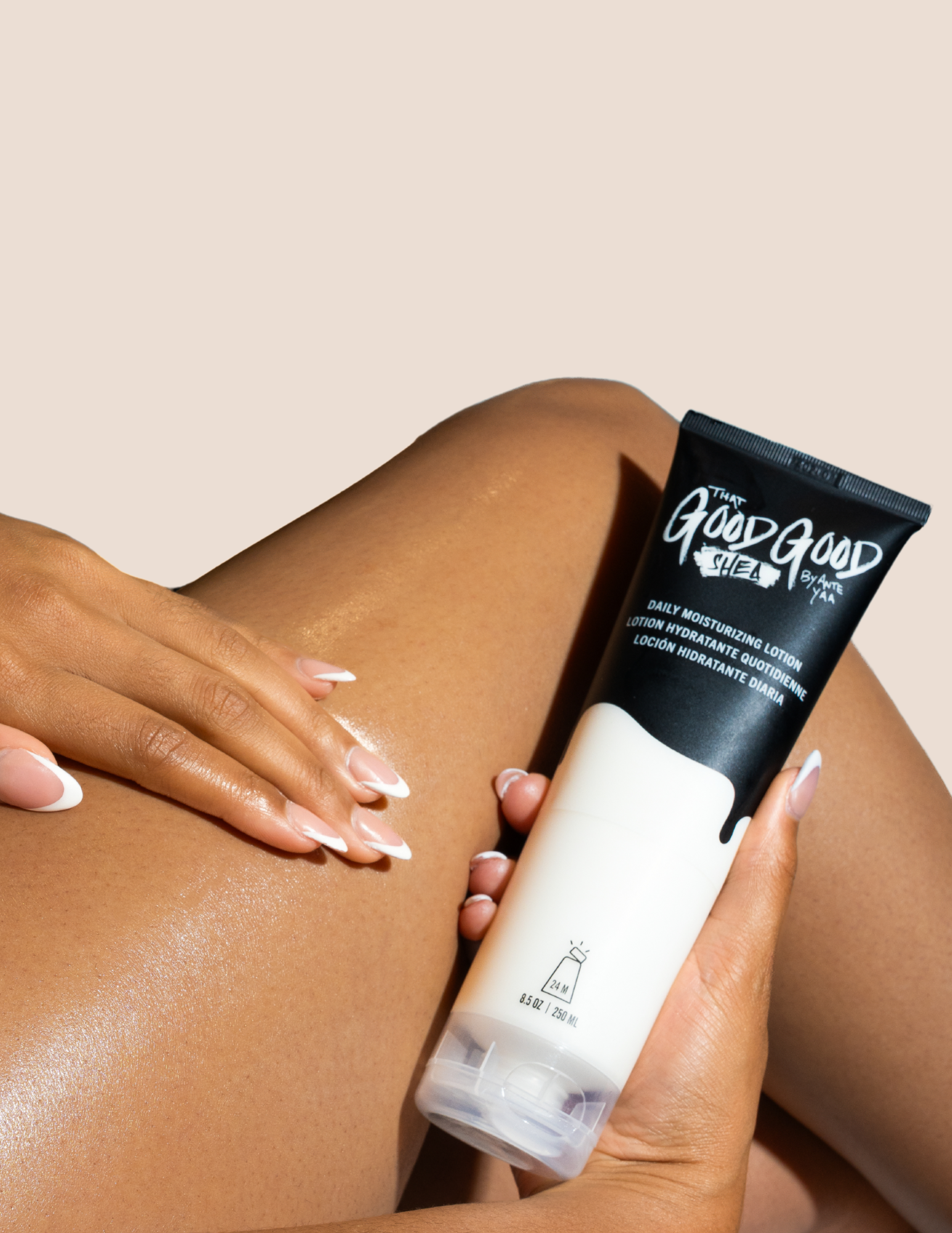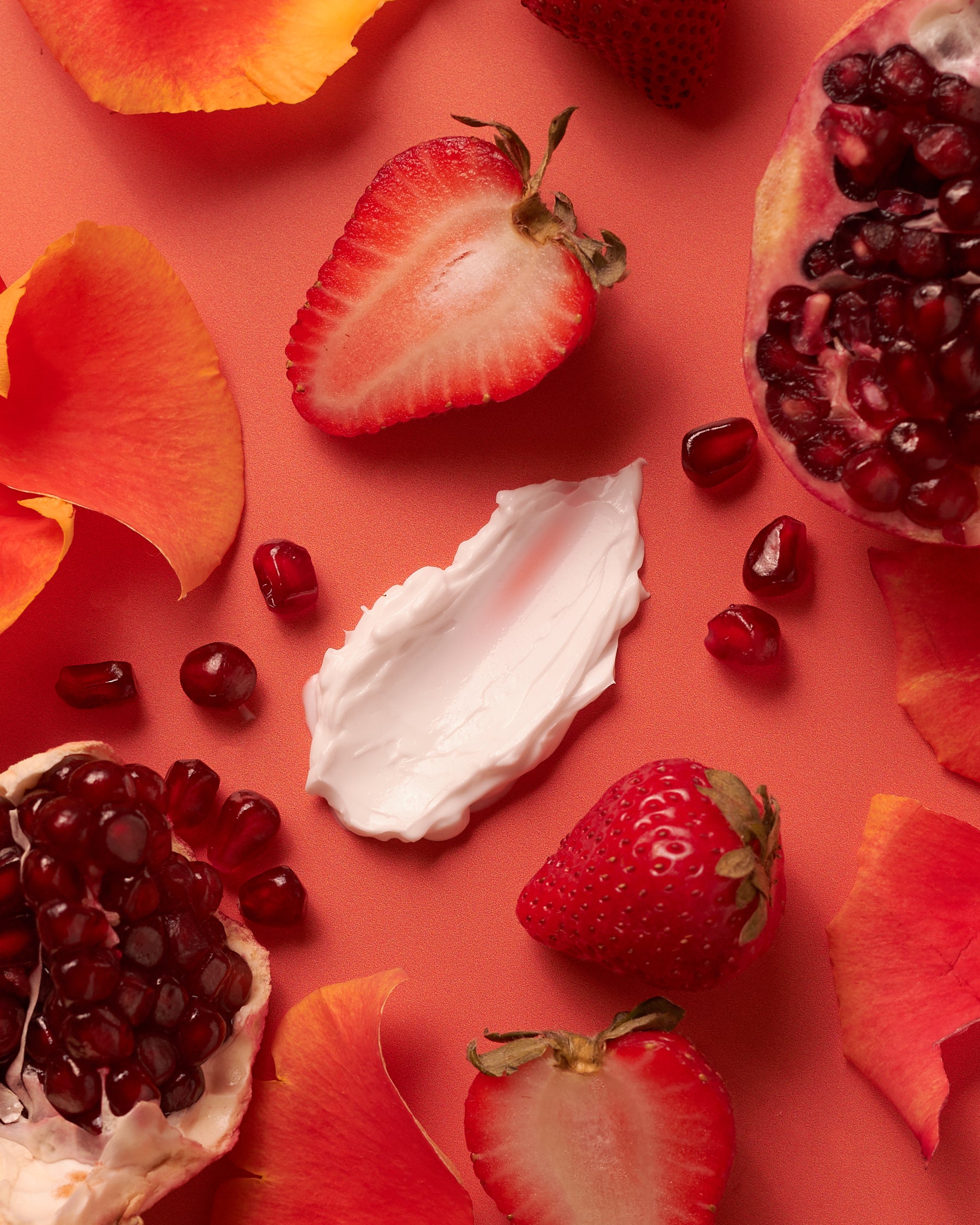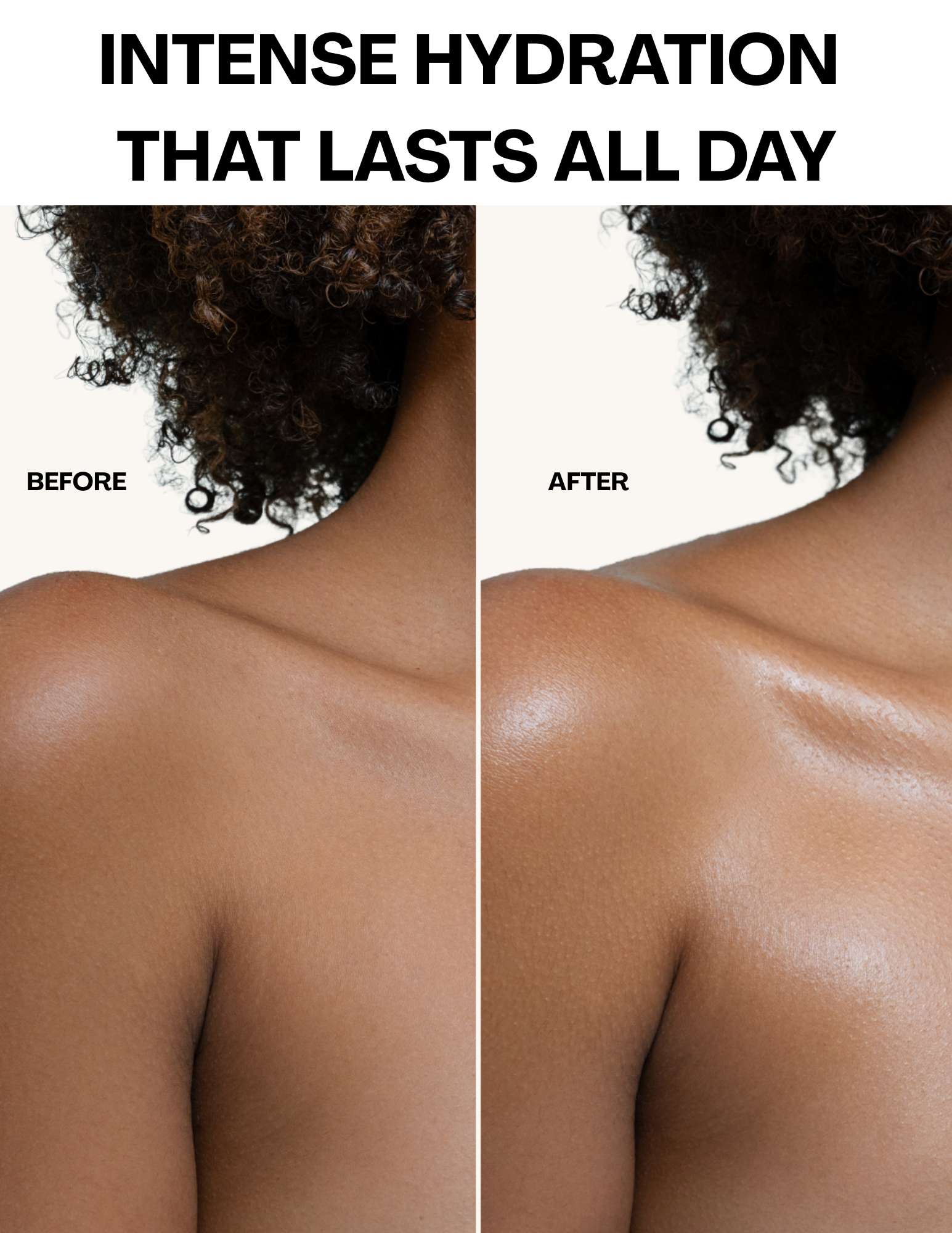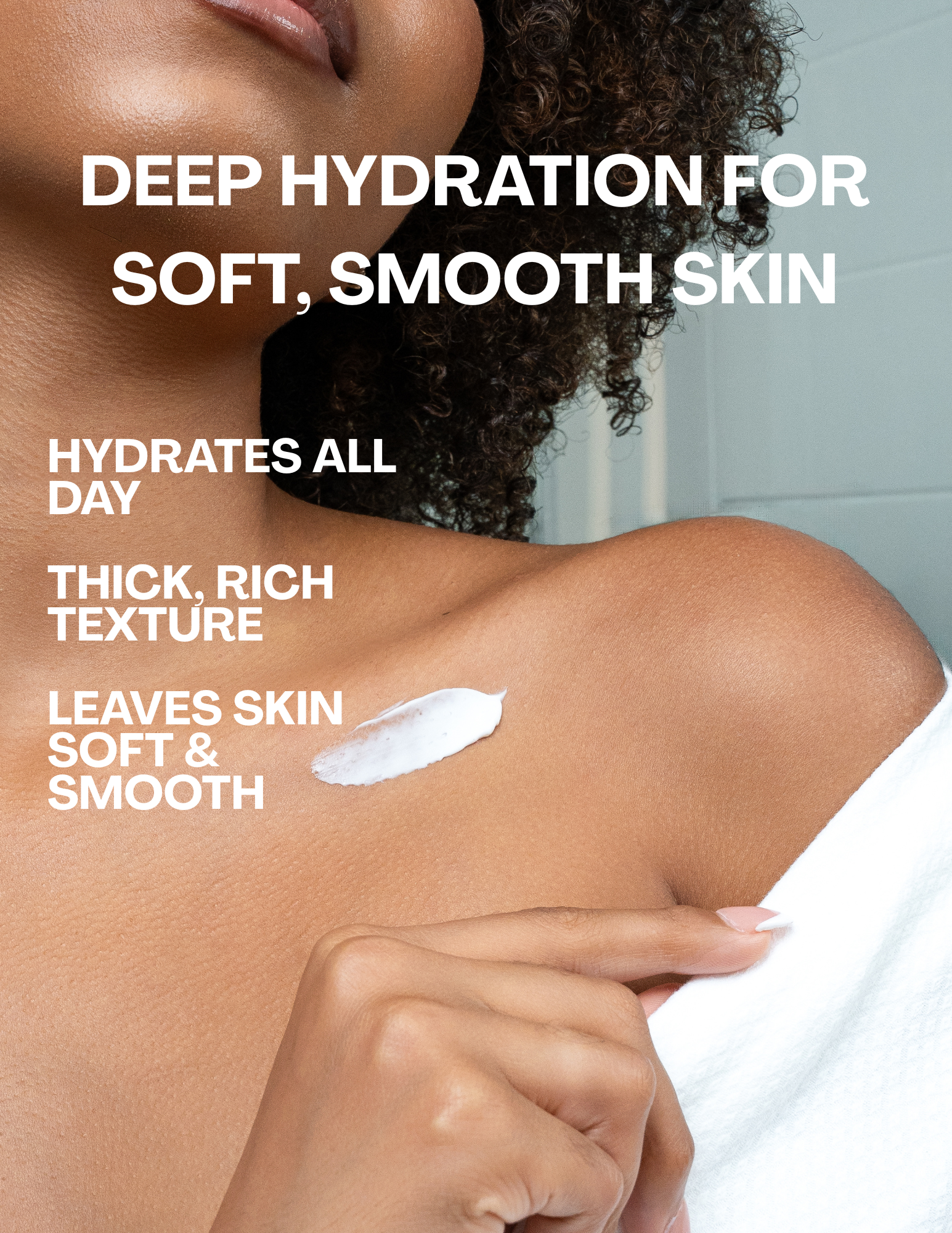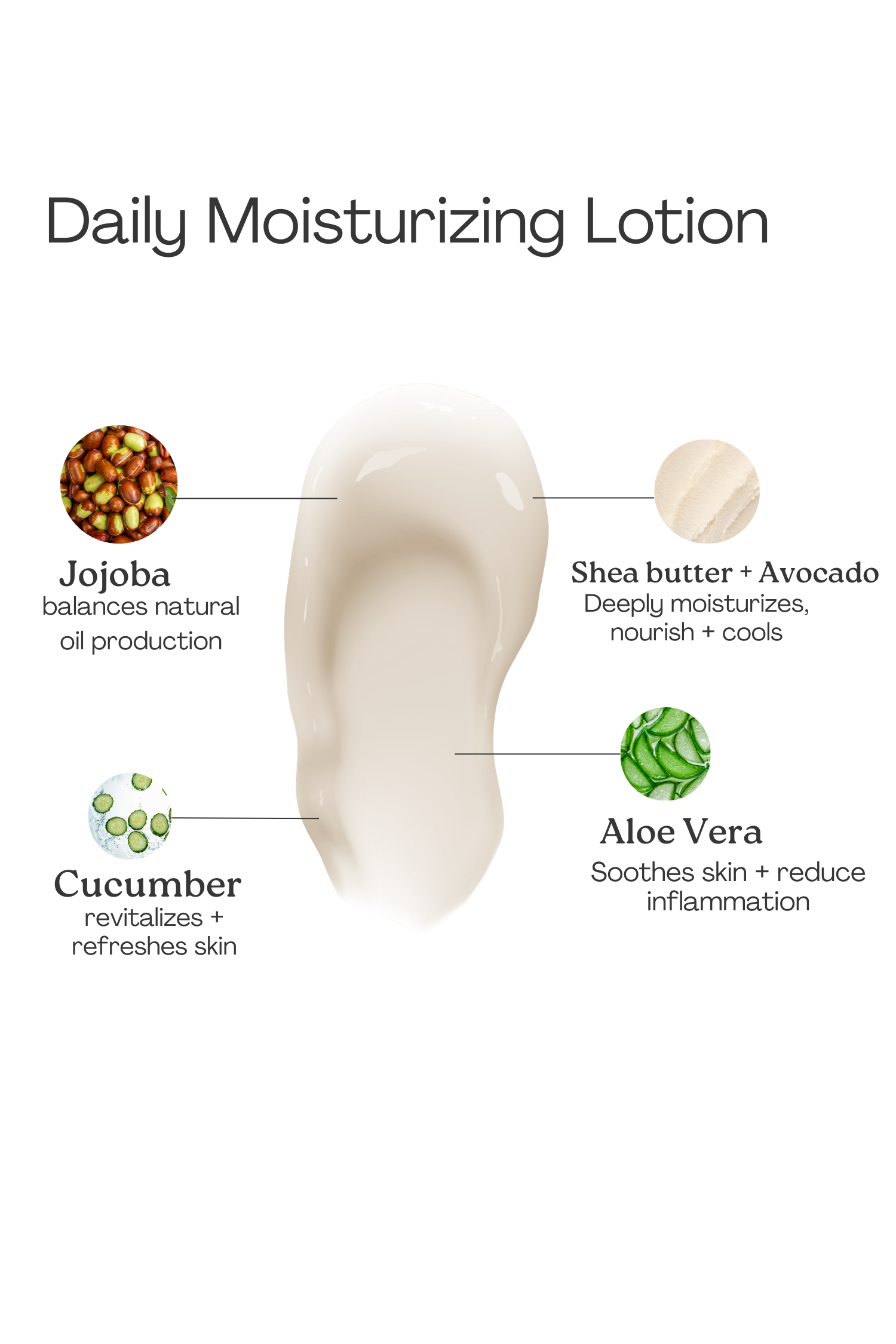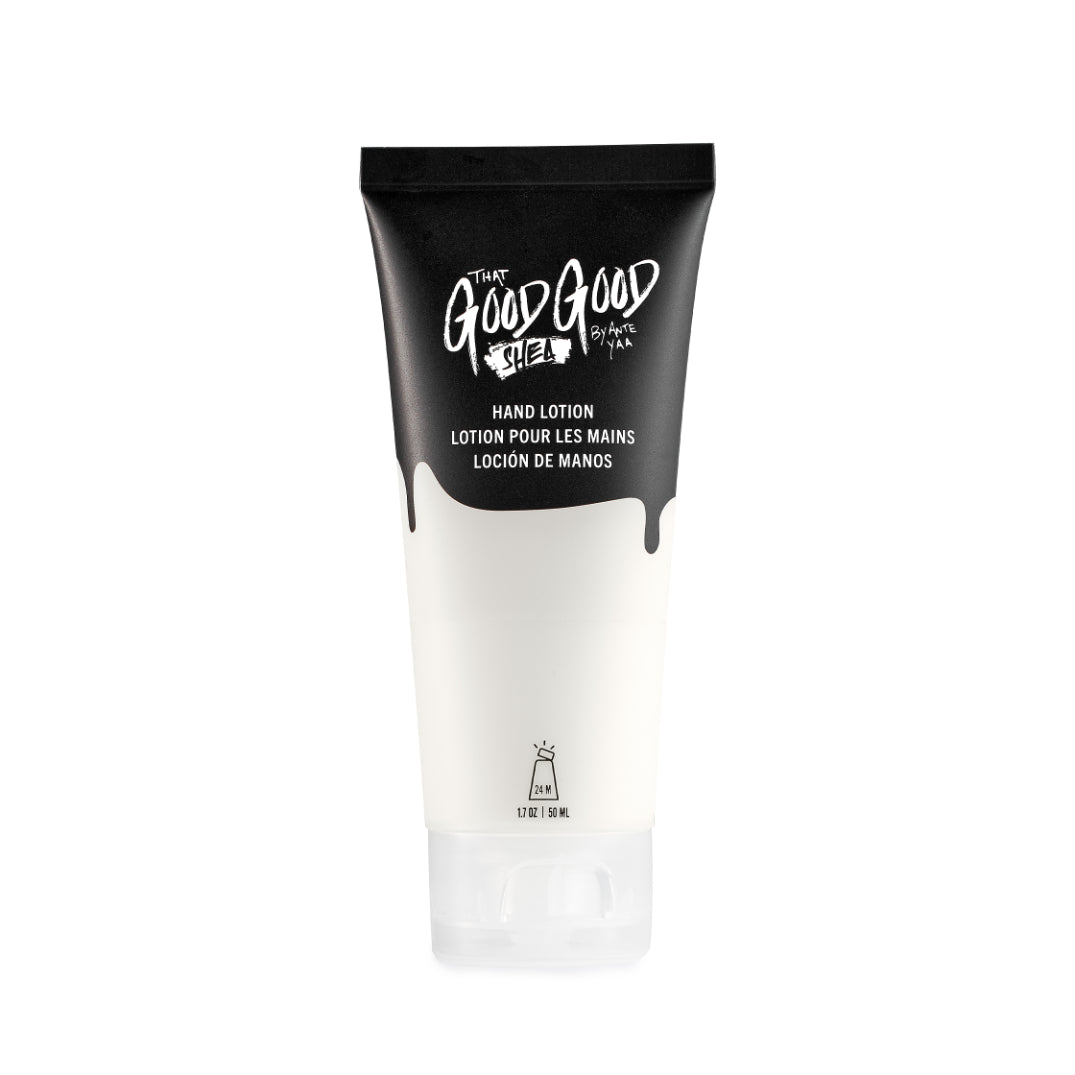What better way to close out Women’s History Month than highlighting the incredible women who are a part of That Good Good Shea team? From the woman who inspired the birth of this company, Ante Yaa, to the women shea farmers who help us get the best shea butter in Ghana and help us earn that extra Good in our name. And, of course, to our Founder Irene Adwoa Bekoe, who created this company to offer everyone healthier, better self-care products we can all feel good about using – women are really the backbone of That Good Good Shea. We couldn’t do any of this without them!

We talk a lot about our shea-infused products being handmade and ethically sourced, but what does all that really mean? Read on to discover what we’re talking about.
That Good Good Shea not only imports all our unrefined shea butter from our homeland Ghana but works specifically with women shea farmers in Northern Ghana to help us source Good Good shea! Working with women, we help support keeping shea butter production a women-led industry. Shea butter production has sustained an essential traditional trade across Sub-Saharan Africa for over 600 years, including Ghana, Nigeria, Mali, and Burkina Faso, to name a few. Traders call this savanna belt the “Shea Belt,” while Ghana and Burkina Faso are the leading exporters of shea nuts and now shea butter worldwide. Shea butter production provides a significant income source for up to 16 million African women!
In Ghana, chiefly in the Northern and Savannah regions, the livelihoods of many households depend on shea and its products. Many women derive economic benefits from either hand-picking shea nuts or processing the shea nuts into shea butter. Shea butter has often been dubbed as women’s “gold” due to the economic opportunities shea production can offer them. In That Good Good Shea’s American and Canadian warehouse locations, we add in by hand our other beneficial ingredients like the natural essential oils; that create those one-of-a-kind scents in your favorite That Good Good Shea Body Butters, Shea Oils and Foaming Shea Sugar Scrubs! Our shea women farmers harvest shea nuts from the shea tree, or the karité tree as we call it in Ghana, before they process it traditionally to make unrefined shea butter and then export it to us, where we add in our finishing touches.
Despite the great importance of shea to women, shea butter production is primarily done through manual, labor-intensive processes, which makes it necessary to recognize the tremendous amount of time and the collective effort it takes to make the shea butter found in all That Good Good Shea’s products. Continuously supporting the women-led shea butter production sector offers space for women to gain independence and empowerment by allowing them to work for themselves. In this way, partnering with women shea farmers back home in Ghana helps us maintain giving you the best shea butter!

How is Shea Butter Made?
Making shea butter is a long labor-intensive process that is done because shea is a versatile natural product that can benefit people in many different ways daily. Shea can be made into edible shea oil, shea butter and medicine – traditionally treating wounds, sprains and even arthritis – all deriving from the shea fruit that grows on the shea tree. People can use the shea tree itself for its lumber as well! This is because the shea tree's wood is actually very durable and considered termite-resistant. The wood is also great for making charcoal.
Shea butter is a seed fat that comes from the shea tree. The shea butter comes from two oily kernels within the shea tree seed. After the kernel is removed from the shea fruit seed, it is ground into a powder and boiled in water. The shea butter then rises to the top of the water and becomes solid.

A More Detailed Step-by-Step Process of the Shea Butter Production is Below!
The Shea Tree
The shea tree is a large tree from the Sapotaceae (soapberry family) native to the Sahel region of West Africa. Wild shea trees take a long time to grow and reach maturity. They start producing commercial quantities of shea fruit only after reaching maturity, which takes about 20 to 50 years! Although, mature shea trees can produce shea nuts continuously for up to 200 years. Shea trees have a much more extended time for growth and production than other plantation crops. For instance, coffee plants bear fruit after just 2 to 3 years and reach full maturity after 7 to 8 years. These coffee plants then continue yielding coffee beans for about 30 years.
Therefore, due to shea trees' long gestation period, the development of commercial shea plantations is not encouraged. So, the entire shea industry is based upon shea nuts being collected and shea butter being produced from naturally growing shea trees. Shea trees blossom from February to March, and the fruit matures from June to July. Shea fruit is harvested from June to September after naturally falling to the ground from the shea tree.
The Shea Fruit
Shea fruit is light green and 2 to 3 inches (5 to 8 cm) in diameter. The fruit consists of a green epicarp (outer layer), a fleshy mesocarp (or pulpy portion), and a hard endocarp (or shell), which holds the embryo or the shea kernel. Usually, the shea fruit has 1 or 2 kernels, but sometimes it may contain 2 or 3. Shea butter is extracted from these kernels. Ripe shea fruit that has fallen from the shea trees is collected during the harvesting months from June to September. Their pulp is taken out either manually or by fermentation to separate the shea nuts. The shea nuts are then processed using one of the three traditional techniques: boiling, roasting or sun-drying.
The Shea Butter Process: Unrefined Shea vs. Refined Shea
Traditionally, shea butter production has been done by boiling the shea kernels with water and skimming off the released oil to make unrefined shea butter. In contrast, commercial shea butter production is achieved by pressing the shea kernels into expellers or solvent extractions to make refined shea butter. The shea butter obtained through expellers or solvent extractions undergo alkali refining to remove free fatty acids, is bleached to reduce or remove the color components, and is deodorized to remove the odor of unrefined shea butter. Processing shea nuts this way causes the shea butter to be unnecessarily refined. Deodorizing the shea butter leads to the shea butter losing most of its natural vitamins and nutrients that people can benefit from.
That is why That Good Good Shea works with our women shea farmers to continue practicing the traditional water extraction process in Northern Ghana to produce our shea butter. The shea nuts are boiled in water, which prevents germination and protects them from hydrolytic degradation of the extracted shea butter. The boiled shea nuts are then sun-dried. The dried shea nuts are cracked to remove the shea kernels from the shell. These kernels are then either sun-dried, roasted or smoked in ovens to remove residual moisture.
The dried shea nut seed kernels are pounded or exposed to wet milling to prepare a smoothed paste by kneading and hand-beating. This paste is boiled in water to separate the fat or shea butter from the kernel cake. The produced butter is scooped up, filtered through a filter cloth, and stored suitably for cooling to obtain solid shea butter. This shea butter does not undergo any unnecessary refining, so it is called unrefined shea butter!

How Empowering Women Helps
That Good Good Shea and You!
As a women-led company, That Good Good Shea is all about furthering female empowerment and is happy to be able to reach that goal in ways like how we manage to get and make our shea-infused products. Rather than outsourcing the shea nut refinement process to another consuming country, our women shea farmers in Ghana lead both the shea nut harvest and shea butter production. This allows these women to gain more profit by providing That Good Good Shea with all our 100% natural unrefined shea butter - not just having them only export the harvested raw shea nuts like some other companies may do.
Furthermore, having our women shea farmers complete the shea butter production offers the added value of our shea butter being made from ethically sourced ingredients and from people who take pride in maintaining and producing shea butter the traditional way.
Also, for the above reasons, we can always confidently offer you products made from a labor of love and care that does not take shortcuts in creating the Good Goods with natural ingredients that can better treat conditions like acne, scars, dry skin, and eczema! This is because, as you now know, we insist on using simple ingredients like unrefined shea butter that preserves its natural nutrients, such as vitamins A and E, which can easily help repair, protect, and strengthen any skin condition for all ages!
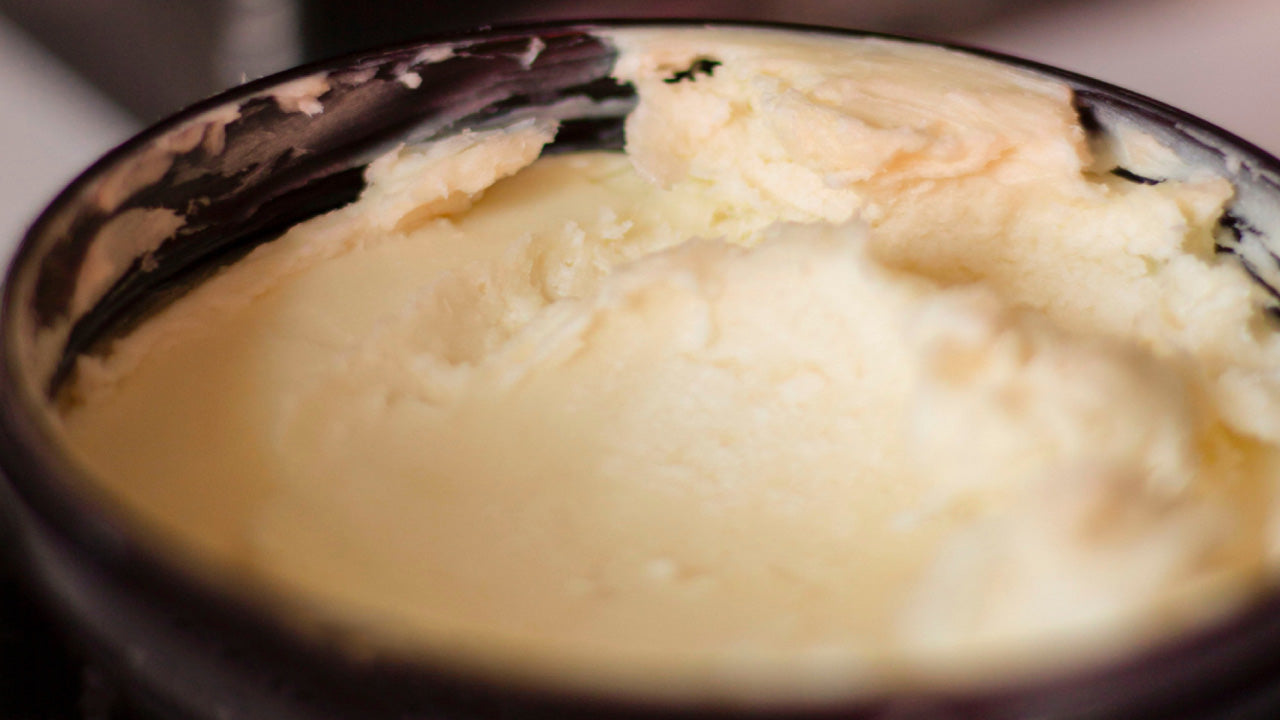
That Good Good Shea’s Product Recommendations!
For our Good Good fam with dry skin, sensitive skin, or eczema, we recommend using our Pure & Unrefined Shea Butter if you have severe symptoms of the skin conditions listed above. Or if you have milder symptoms, we suggest our Unscented Shea Body Butter, Unscented Foaming Shea Sugar Scrub, and Unscented Shea Oil, which include our unrefined shea plus other naturally soothing and beneficial ingredients.
For our Good Good fam with a normal skin type, you can mix and match our scented Shea Body Butter, Foaming Shea Sugar Scrub, and Shea Oil with all the same moisturizing and protective benefits. All our scented items get their unique scents from natural essential oils with antibacterial and soothing benefits we label on all those products!
Browse The Goods now on our site – your skin will love you for it!
